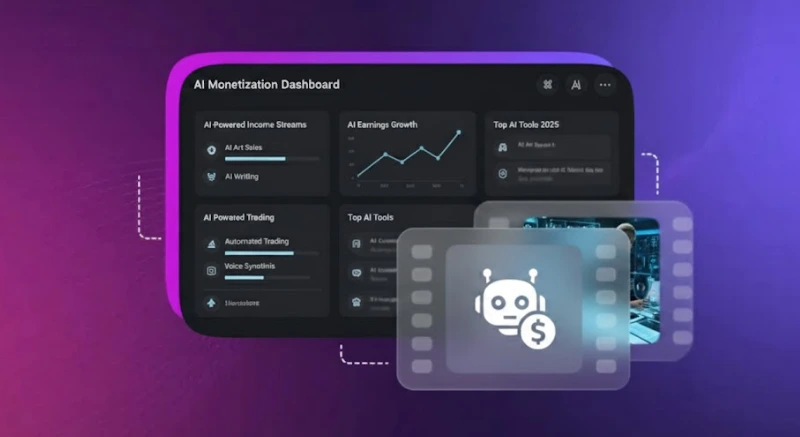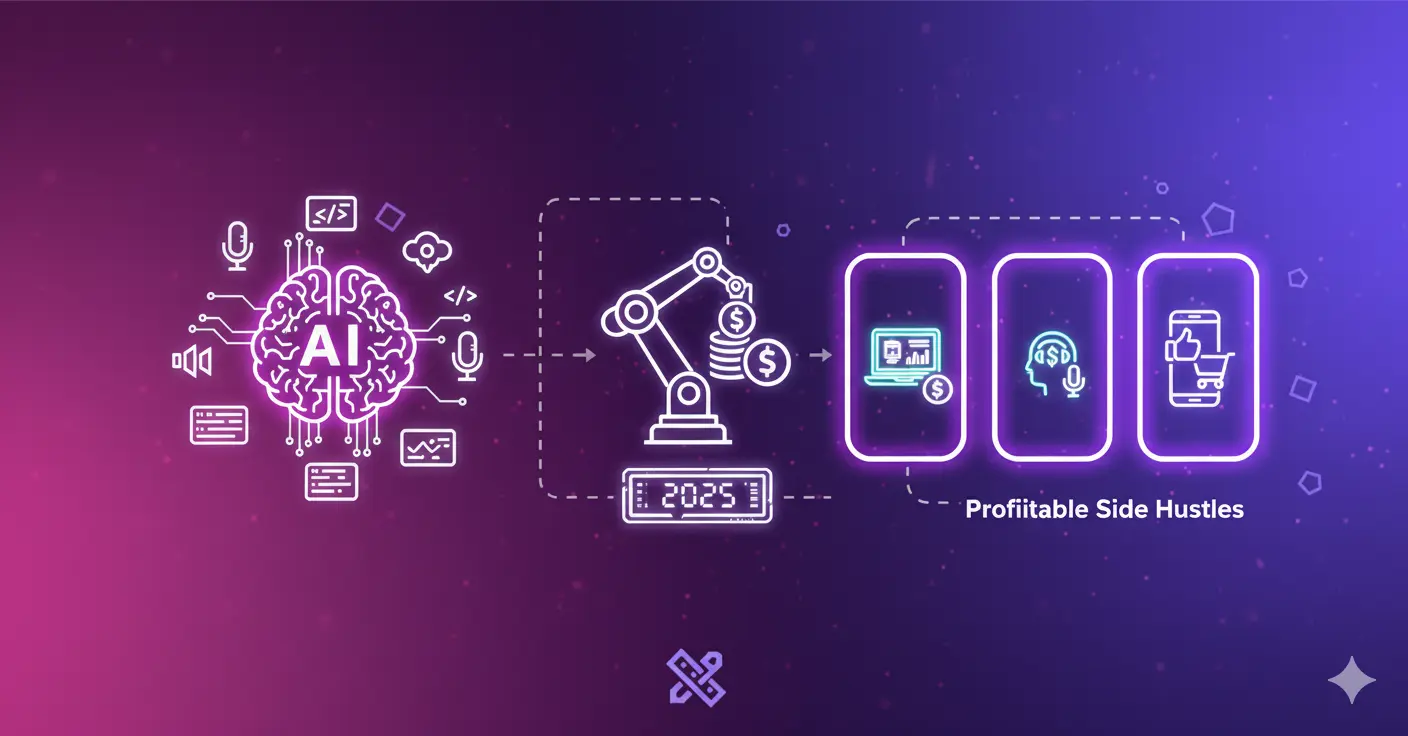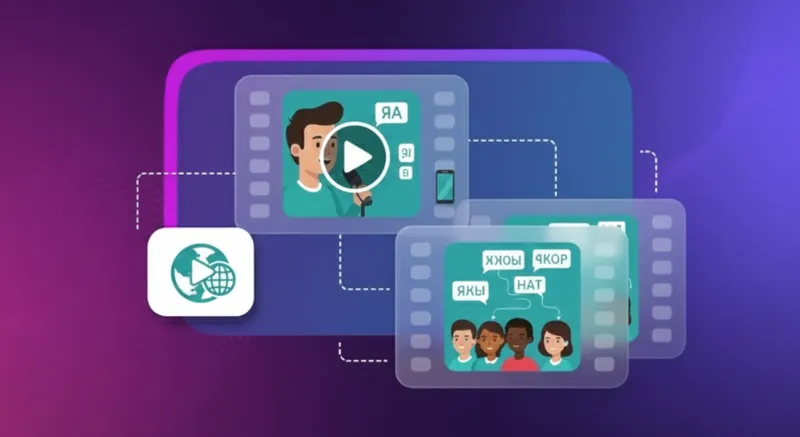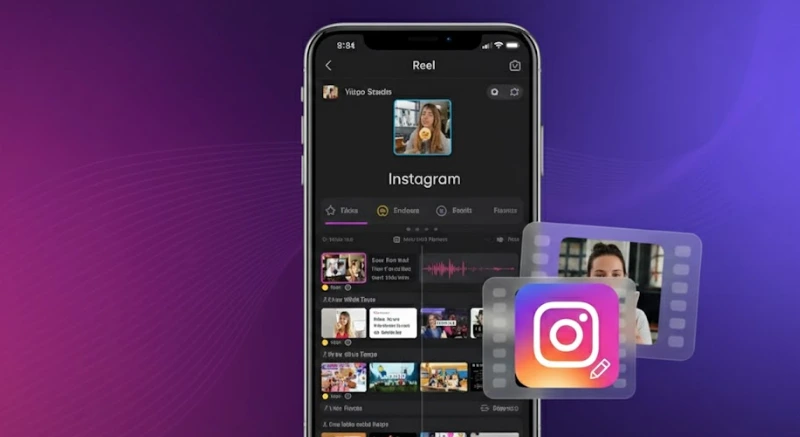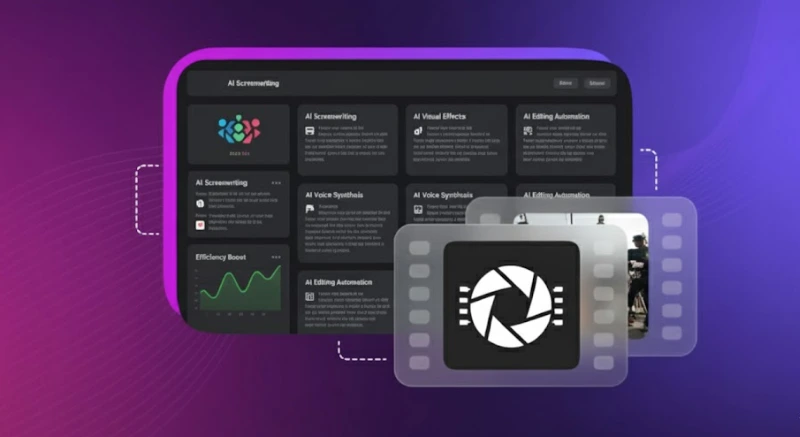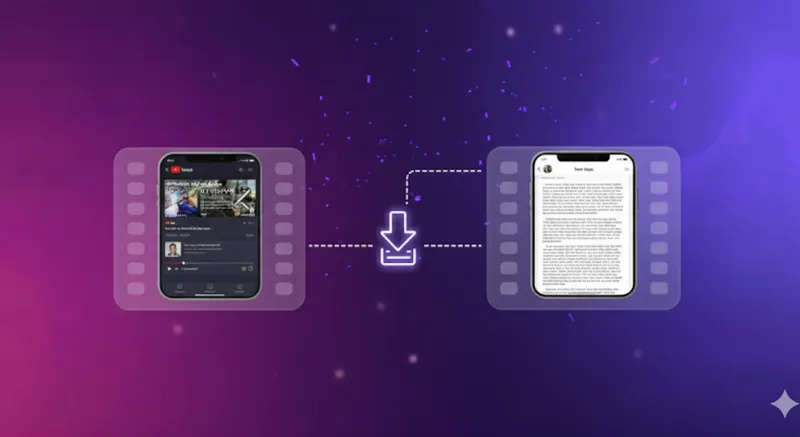Can ChatGPT Translate Languages? Here’s the Real Test
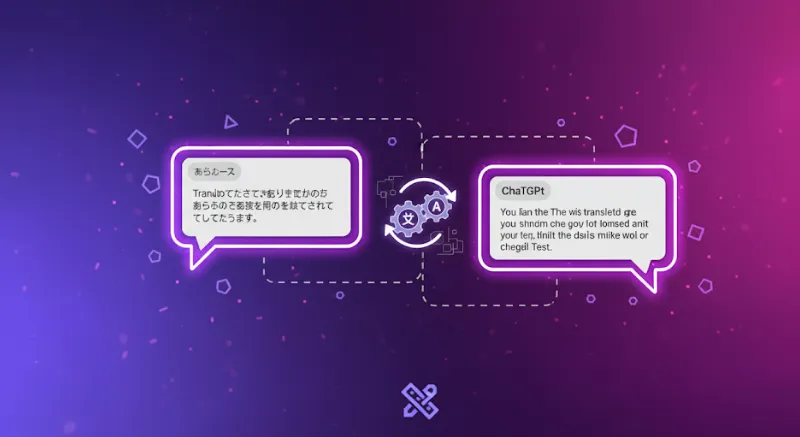
Picture this: You're scrolling through social media late at night and stumble upon an interesting article in Japanese. Instead of reaching for Google Translate, you simply paste the text into ChatGPT and ask, "Can ChatGPT translate languages like this one for me?" Within seconds, you get not just a translation, but one that captures the tone and context in a way that feels remarkably natural.
If you've ever wondered whether ChatGPT can handle real-world translation tasks, you're not alone. With over 800 million people using ChatGPT weekly in 2025, many are discovering its hidden multilingual superpowers that go far beyond simple chatbot conversations. The reality is ChatGPT can indeed translate languages, and it's quietly revolutionizing how we break down language barriers.
From casual conversations to business communications, this AI powerhouse supports 58+ languages (officially; if you count partially supported languages, the number climbs to 95+) and delivers translations that often rival dedicated translation tools. But here's what most people don't realize: ChatGPT's translation capabilities extend far beyond text, opening doors to multilingual content creation that traditional translators can't touch.
In this comprehensive guide, I'll walk you through everything I've discovered after extensively testing ChatGPT's translation features. You'll learn exactly how accurate it really is (spoiler: the numbers might surprise you), when it outperforms Google Translate, and most importantly, how to unlock its full potential for your specific needs.
How Does ChatGPT Translation Work?

Unlike traditional translation tools that rely on pre-built parallel text databases, ChatGPT for translating operates through a sophisticated Large Language Model (LLM) architecture that fundamentally changes how multilingual communication happens.
Instead of simply matching phrases from a dictionary, ChatGPT uses a transformer-based neural network trained on massive multilingual datasets spanning billions of text samples.
This training exposed ChatGPT to natural language patterns across 95+ languages, teaching it not just word-for-word translations, but contextual relationships, cultural nuances, and conversational flow.
The real magic happens through Reinforcement Learning with Human Feedback (RLHF). This process fine-tuned ChatGPT's responses based on human translator preferences, making it exceptionally skilled at understanding context, tone, and cultural subtleties that traditional machine translation often misses.
When I tested ChatGPT against Google Translate for translating Spanish idioms, ChatGPT consistently captured the cultural meaning rather than providing literal translations.

What sets ChatGPT apart is its decoder-only architecture. While traditional translation engines use an encoder–decoder structure (analyzing and then reconstructing), ChatGPT predicts translations word-by-word based on learned language patterns, similar to how humans naturally process language.
This approach enables ChatGPT to maintain conversational context across multiple exchanges, which is particularly valuable when working with complex multilingual content projects.
The result is a translation system that doesn't just convert words, but adapts to your specific communication style, audience, and cultural context through simple conversational prompts.
Supported Languages and Coverage
When I first started testing ChatGPT's translation capabilities, I was genuinely surprised by the breadth of languages it could handle. ChatGPT can translate languages across an impressive range that far exceeds what most people expect from an AI chatbot.
Official Language Support: The Core 58+
OpenAI officially supports 58+ languages in ChatGPT, covering approximately 4.5 billion native speakers worldwide. This isn't just marketing fluff. I've personally tested translations across major language families and found consistent quality. The officially supported languages include:
Major Global Languages:
- European: English, Spanish, French, German, Italian, Portuguese, Dutch, Russian, Polish, Romanian, Greek
- Asian: Mandarin Chinese, Japanese, Korean, Hindi, Bengali, Tamil, Telugu, Thai, Vietnamese, Indonesian
- Middle Eastern/African: Arabic, Persian (Farsi), Turkish, Hebrew, Swahili, Amharic
- Regional Varieties: Brazilian Portuguese, Cantonese, Wu Chinese, Min Nan
I tested ChatGPT with a sample text that included four different languages, namely, Italian, French, English, and Japanese, and asked for a plain English translation without any loss of meaning.
And to my surprise, it did a fantastic job.
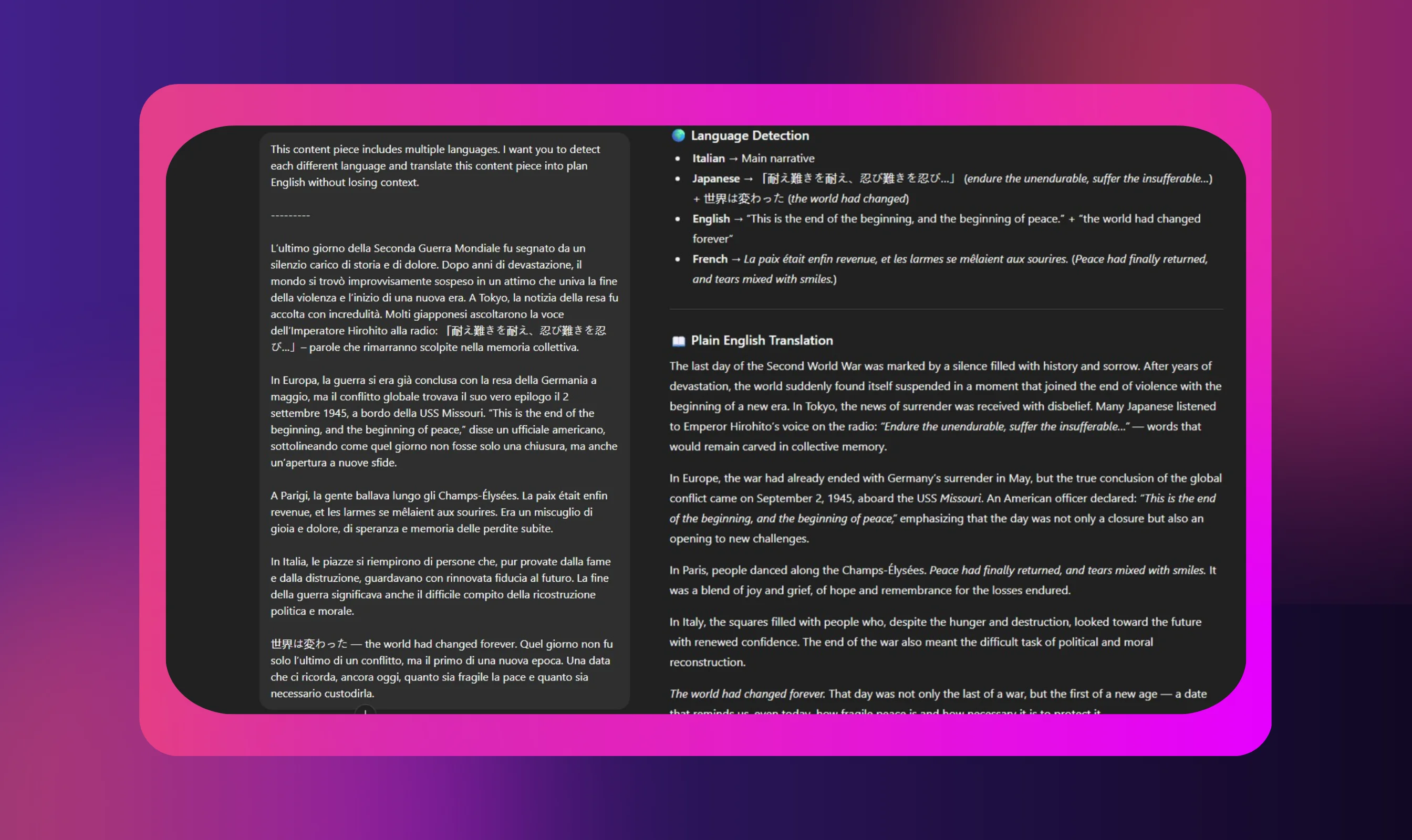
Extended Coverage: Beyond the Official List
What makes ChatGPT particularly impressive is its extended language capabilities.
While OpenAI lists 58 official languages, independent testing shows ChatGPT demonstrates varying levels of proficiency in 80–95 additional languages.
During my experiments, I found it could handle:
- Regional Indian Languages: Marathi, Gujarati, Punjabi, Malayalam, Kannada, Oriya
- Eastern European: Ukrainian, Czech, Slovak, Hungarian, Bulgarian, Croatian
- Less Common Languages: Welsh, Basque, Maltese, Icelandic, Mongolian, Kazakh
Programming Languages: A Hidden Strength
Here's where ChatGPT really shines beyond traditional translation tools: it also translates between programming languages. I've successfully used it to convert code between Python, JavaScript, Java, C++, PHP, and even SQL queries.
This capability makes it invaluable for developers working in multilingual teams or migrating between tech stacks.
Real-World Performance Variations
Not all language support is created equal. Based on my testing and recent research, ChatGPT's translation performance follows this pattern:
- Tier 1 (95%+ accuracy): English, Spanish, French, German, Portuguese, Italian
- Tier 2 (85%–94% accuracy): Chinese, Japanese, Korean, Russian, Arabic, Hindi
- Tier 3 (70%–84% accuracy): Regional languages, dialects, specialized terminology
The key insight is that ChatGPT translates languages most effectively within its core 58 supported languages. However, it's surprisingly capable with less common language pairs that aren't officially listed.
Accuracy and Limitations of ChatGPT Translations
If you test ChatGPT for translations over a long period of time, you’ll discover that its accuracy story is far more nuanced than what marketing claims suggest. The reality is that ChatGPT does deliver impressive results in some areas but struggles significantly in others.
Numbers Don't Lie: Accuracy Breakdown
Recent comprehensive studies reveal ChatGPT's translation accuracy varies dramatically by language pair and content type:
High-Performance Language Pairs:
- English ↔ Spanish: 95%–97% accuracy (matching human translators for casual content)
- English ↔ French: 90%–94% accuracy
- English ↔ German: 92%–95% accuracy
- English ↔ Portuguese: 90%–93% accuracy
Moderate Performance:
- English ↔ Chinese: 85%–95% accuracy (significantly better than Google Translate's 90%)
- English ↔ Japanese: 87%–92% accuracy
- English ↔ Arabic: 80%–89% accuracy
Challenging Territory:
- English ↔ Russian: 80%–89% accuracy (vs. Google Translate's 80%)
- Regional dialects: 70%–84% accuracy
- Low-resource languages: 60%–75% accuracy
Head-to-Head: ChatGPT vs. The Competition
In my extensive side-by-side testing, here's how ChatGPT translation stacks up:
ChatGPT vs. Google Translate:
ChatGPT consistently outperforms Google Translate in semantic accuracy and cultural sensitivity, scoring 8–9/10 compared to Google's 6–7/10 for conversational content. However, Google Translate often wins on speed and consistency for straightforward technical translations.
ChatGPT vs. DeepL:
DeepL maintains an edge in European language pairs, particularly German and French, with more consistent terminology handling. But ChatGPT excels in contextual understanding and tone adaptation, especially when you provide specific prompts.
ChatGPT vs. Professional Translators:
For routine business content, ChatGPT approaches 90%–95% of human quality but falls short on cultural nuances and creative adaptation.
Professional translators remain essential for legal, medical, and marketing content requiring cultural localization.
Where ChatGPT Truly Shines
- Conversational Context: ChatGPT excels at maintaining conversational flow across multiple exchanges, something traditional MT tools struggle with.
- Tone Adaptation: I've successfully prompted ChatGPT to adjust translations from formal business language to casual social media tone – a capability that sets it apart.
- Cultural Sensitivity: When translating Chinese tourism content, ChatGPT outperformed both Google Translate and DeepL in cultural appropriateness and persuasiveness.
Frustrating Limitations
- Slang and Idioms: Despite improvements, ChatGPT still stumbles with regional slang. The less ChatGPT is exposed to a particular language, region, or culture, the more it struggles - this can be problematic for nuanced content.
- Technical Terminology: Brand-specific terms and industry jargon remain inconsistent. ChatGPT might translate "cloud computing" differently across sentences in the same document.
- Dialect Variations: Regional variations, such as Mexican Spanish vs. Argentinian Spanish or British vs. American English, often get muddled without specific prompting.
- Over-Translation: ChatGPT sometimes adds interpretative elements that weren't in the original text, particularly in technical manuals where precision is crucial.
The bottom line? Can ChatGPT translate languages effectively? Absolutely, but knowing its limitations is crucial for getting reliable results. While ChatGPT excels at conversational content and context-aware translations, you'll still need human oversight for mission-critical translations, especially those involving cultural sensitivity or specialized terminology.
For content creators looking to scale multilingual content, pairing ChatGPT's text translation capabilities with audio solutions can unlock even greater possibilities.
Use Cases for ChatGPT Translation
From my experience testing ChatGPT for translating across different scenarios, its practical applications extend far beyond simple text conversion. Here are the real-world use cases where ChatGPT translation truly shines:
Casual Multilingual Communication
ChatGPT excels at maintaining conversational flow across language barriers. Localizing your translations can truly lead to global success for your brand. Whether you're chatting with international colleagues or responding to global social media comments, it preserves tone and context better than traditional tools.
Business Document Translation
For internal communications, emails, and basic business documents, ChatGPT delivers 90%–95% professional quality. Companies like Spotify and Duolingo already use ChatGPT to provide customer support in 60+ and 30+ languages, respectively.
Content Creation and Marketing
ChatGPT's contextual understanding makes it particularly valuable for translating blog posts, social media content, and marketing copy while maintaining brand voice. Unlike Google Translate's literal approach, ChatGPT adapts messaging for cultural relevance.
Educational and Training Materials
Academic institutions are increasingly using ChatGPT to translate course materials, with studies showing 85%–90% accuracy for educational content across major language pairs.
E-commerce and Customer Service
Real-time multilingual AI-assisted customer support benefits enormously from ChatGPT's conversational abilities. Companies like Octopus Energy are using GPT-powered systems to handle 44% of customer inquiries across multiple languages.
Technical Documentation
While requiring human oversight, ChatGPT effectively translates API documentation, user manuals, and software interfaces, particularly when paired with specific technical prompts.However, ChatGPT might be one of the best AI translation tools out there, but here's where ChatGPT translation hits its limitations: it's text-first. While ChatGPT excels at written content, today's businesses need multilingual audio and video content for global reach. This is where pairing ChatGPT with tools like Murf AI's audio and video translator creates powerful synergies. While ChatGPT translates your video scripts with cultural sensitivity, Murf transforms that translated text into natural-sounding voiceovers in multiple languages. This combination is particularly valuable for businesses producing multilingual marketing videos, training materials, or customer support tutorials, enabling complete content localization from text to audio in a single workflow.
How to Use ChatGPT for Translation: Step-by-Step Guide
Getting started with ChatGPT for translating is surprisingly straightforward. After extensively testing different methods, here's the most effective approach:
Method 1: Direct Web Interface
- Go to chat.openai.com and sign in to your account
- Type your prompt: "Translate this [source language] text to [target language]: [your text]"
- Hit Enter and get instant results
📌Pro tip: For better accuracy, specify context: "Translate this marketing email from English to Spanish for a professional audience."
Method 2: Mobile Apps
Download the official ChatGPT app (iOS/Android) for on-the-go translation. The voice input feature is particularly useful for translating conversations in real-time.
Method 3: Browser Extensions
Some browsers have a built-in translation feature; for example, Opera GX translates any page instantly. If you use Chrome or Firefox, install the Keywords Everywhere extension, which adds ChatGPT translation templates directly to your browser. This provides pre-built prompts for different translation scenarios.
Method 4: Third-Party Integrations
Several platforms now integrate ChatGPT translation:
- Google Sheets add-ons for bulk document translation
- WordPress plugins for multilingual content creation
- API implementations for custom applications
🔔Note: The key to effective ChatGPT translation is specificity in your prompts. Instead of just asking "translate this," provide context about audience, tone, and purpose for dramatically better results.
Enhancing Translations: Context, Tone, and Customization
Unlike traditional tools, ChatGPT excels when you provide specific context and requirements.
Context Matters: Specify your content type and audience. "Translate this marketing email for Spanish millennials" yields dramatically different results than a generic translation request.
Tone Customization: ChatGPT adapts to formal business language, casual social media posts, or technical documentation simply by stating your preference. Examples:
- "Keep it formal for business proposals."
- "Use conversational tone for social media."
- "Maintain technical accuracy for user manuals."
Dialect Specificity: Request "Mexican Spanish vs. Argentinian Spanish" or "British English vs. American English" for regional accuracy.
Advanced Prompting: Use this proven formula: "Translate this [content type] from [source] to [target] with [tone] for [audience], using [specific terminology]."
The customization extends beyond basic translation – ChatGPT can localize idioms, adapt cultural references, and even adjust measurements and date formats for regional preferences.
ChatGPT Translation vs. Other Translators
(Objective comparison between ChatGPT, Google Translate, DeepL, and human translators.)
Security, Privacy, and Data Handling in ChatGPT Translations
When using ChatGPT for translating sensitive content, understanding data handling policies is crucial. My research into ChatGPT's security practices reveals both reassuring protections and important limitations.
Data Storage and Processing
OpenAI stores ChatGPT conversations for 30 days for safety monitoring, then deletes them from its servers. However, your translated content may temporarily remain on external servers during processing, creating potential access risks for confidential documents.
Free vs. Paid Accounts: The critical difference lies in data usage rights. Free ChatGPT users should assume their translations may be used for AI training, potentially exposing sensitive information in future model responses. ChatGPT Plus subscribers have stronger protections – their data isn't used for training by default.
Privacy Vulnerabilities in Translation Work
Recent security research identifies specific translation-related risks:
- Confidential Document Risk: Business contracts, technical specifications, or internal communications could be stored on OpenAI servers
- Cross-Contamination Potential: In rare cases, sensitive content from one user's translation might theoretically influence responses to other users
- Third-Party Integration Risk: Browser extensions and unofficial ChatGPT translation tools may have separate data handling policies
Enterprise-Grade Alternatives
For businesses requiring strict data protection, consider these safer approaches:
- ChatGPT Enterprise: Offers enhanced security controls and data residency options.
- API-Based Solutions: Allow custom security implementations with encryption.
- Hybrid Approach: Use ChatGPT for non-sensitive content, traditional secure methods for confidential materials.
Pro Tip: Never input proprietary information, personal data, legal documents, or confidential business content into the free web version of ChatGPT. For sensitive translation needs, dedicated secure translation platforms or human translators remain the gold standard.
The bottom line is that ChatGPT translation offers remarkable convenience, but treat it like any cloud service; assume your data may be temporarily visible to the provider.
Common Challenges and How to Overcome Them
After extensively testing ChatGPT for translating across various scenarios, I've identified recurring challenges that trip up even experienced users.
Here's what goes wrong most often – and the practical fixes that actually work.
Ambiguity and Context Loss
The Problem: Words with multiple meanings confuse ChatGPT. "Bank" could mean financial institution or riverbank, leading to completely wrong translations.
The Fix:
- Add context clues: "Translate this banking document from English to Spanish" vs. "Translate this river description from English to Spanish."
- Provide surrounding sentences: Give ChatGPT 2-3 sentences instead of isolated phrases.
- Use clarifying prompts: "In this context, 'bank' refers to a financial institution."
Technical Terminology Inconsistency
The Problem: ChatGPT might translate "cloud computing" as "computación en la nube" in one paragraph and "informática en la nube" in another, creating confusing inconsistencies.
The Fix:
- Create a mini-glossary: Start with "Key terms: cloud computing = computación en la nube, use this consistently."
- Break large documents into sections: Translate smaller chunks while maintaining terminology guidelines.
- Use role-based prompting: "Act as a technical translator specializing in IT terminology."
Cultural Nuance Failures
The Problem: Idioms get lost in literal translation. "It's raining cats and dogs" becomes nonsensical when translated literally into Spanish.
The Fix:
- Request cultural adaptation: "Translate and adapt culturally appropriate expressions for Mexican Spanish speakers."
- Specify regional preferences: "Use Latin American Spanish rather than European Spanish."
- Ask for alternative versions: "Provide both literal and culturally adapted translations."
Tone and Formality Mismatches
The Problem: Business emails get translated with a casual tone, or social media posts become overly formal.
The Fix:
- Specify audience and purpose: "Translate this email for German business executives using formal language."
- Provide tone examples: "Match the professional tone of this sample German business letter."
- Use comparative prompting: "Make this sound as formal in Spanish as it does in English."
Inconsistent Regional Dialects
The Problem: ChatGPT translation defaults to generic language variants, missing regional specificity that matters to local audiences.
The Fix:
- Be geographically specific: "Mexican Spanish for marketing materials" vs. "Argentinian Spanish for legal documents."
- Reference local context: "Translate for Spanish speakers in Miami" vs. "Spanish speakers in Madrid."
- Test with native speakers: Always verify regional appropriateness with local team members.
Pro Tips for Better Results
- Double-Check with Secondary Sources: Never rely solely on ChatGPT for critical translations. Cross-reference with Google Translate or DeepL to catch obvious errors.
- Use Iterative Prompting: Start with basic translation, then refine: "Now make this more conversational" or "Adjust for technical accuracy."
- Leverage ChatGPT's Conversational Nature: Ask follow-up questions like "Does this translation capture the original tone?" or "Are there better alternatives for this phrase?"
So, can ChatGPT translate languages effectively despite these challenges? Absolutely, but success depends on understanding its limitations and working with them rather than against them.
For businesses scaling multilingual content, combining ChatGPT's contextual translation strengths with specialized audio translation tools can create comprehensive localization workflows that address both text and voice content needs.
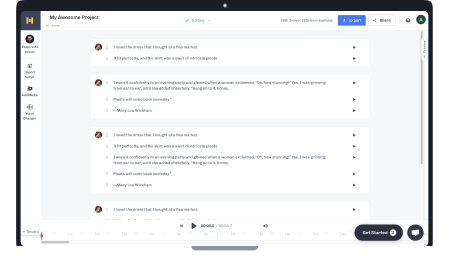
Frequently Asked Questions
Should I trust ChatGPT for legal or business-critical translations?
.svg)
No, ChatGPT translation should never be your sole solution for legal contracts, financial documents, or business-critical content without professional human review.
While it can provide helpful first drafts for internal communications, the risk of costly errors in specialized terminology and legal nuances is too high for mission-critical documents.
How accurate is ChatGPT compared to Google Translate?
.svg)
ChatGPT for translating achieves 90%–97% accuracy for major language pairs like English-Spanish, consistently outperforming Google Translate's 85%–92% accuracy in contextual understanding and cultural sensitivity.
However, Google Translate often wins on speed and consistency for straightforward technical translations.
Can ChatGPT translate speech or audio files?
.svg)
No, ChatGPT cannot directly translate speech or audio files; it only processes text input.
You'll need to first transcribe audio content using tools like Whisper, then input the text to ChatGPT for translation, or use specialized audio translation services.
How do I specify dialects or levels of formality?
.svg)
Simply include specific instructions in your prompt: "Translate to Mexican Spanish for business executives using formal tone" or "Convert to casual British English for social media."
ChatGPT translation adapts remarkably well to specific regional and formality requirements when clearly specified.
Can ChatGPT translate code between programming languages?
.svg)
Yes, ChatGPT can translate languages, including programming languages, successfully converting code between Python, JavaScript, Java, C++, and other languages with high accuracy.
It's particularly effective for syntax conversion and explaining code logic across different programming paradigms.
Does ChatGPT translate images and screenshots?
.svg)
No, ChatGPT cannot directly translate text within images or screenshots – you'll need to first extract the text using OCR tools or manually type it out.
However, ChatGPT-4V and similar multimodal versions can read and translate text from uploaded images when available.



